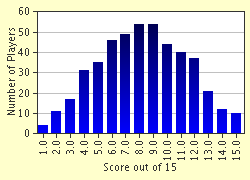Quiz Answer Key and Fun Facts
1. Who is considered to be the first King of Scots?
2. Many Scottish kings have had nicknames. Which of the following is not one of them?
3. Whose death in 1290 precipitated a crisis over the succession in Scotland?
4. Who was chosen to be King of Scots in 1292?
5. Where did William Wallace win a surprise victory over the English in 1297?
6. Which King led the English army defeated by Robert the Bruce at the Battle of Bannockburn in 1314?
7. When David II died in 1371 he was succeeded by Robert II, first of the House of Stewart/Stuart. What was the relationship between the two?
8. Many of the Stewart monarchs met unfortunate ends. Which of the following is NOT one of them?
9. Many of these violent ends led to children inheriting the throne - James I, II, III, IV and V, Mary I and James VI were all minors when they became monarch - the youngest of these was Mary, Queen of Scots. How old was she when she became Queen?
10. Mary, Queen of Scots was the most-married Scottish monarch with three husbands. Which of the following was she not married to?
11. Scotland maintained an alliance with which major European power for over 250 years?
12. In which year did James VI of Scotland inherit the English throne as James I of England?
13. As a result of their chief's late arrival to swear oaths to King William and Queen Mary, members of the MacDonald clan were brutally killed by government soldiers under the leadership of Campbell of Glenlyon in 1692. How is this event known to history?
14. In 1698 a group of would-be colonists left Scotland for the Isthmus of Panama to found the country's first overseas colony. How is this venture known to history?
15. In whose reign did the Union of the Parliaments which created Great Britain take place?
Source: Author
alan03
This quiz was reviewed by FunTrivia editor
bloomsby before going online.
Any errors found in FunTrivia content are routinely corrected through our feedback system.

